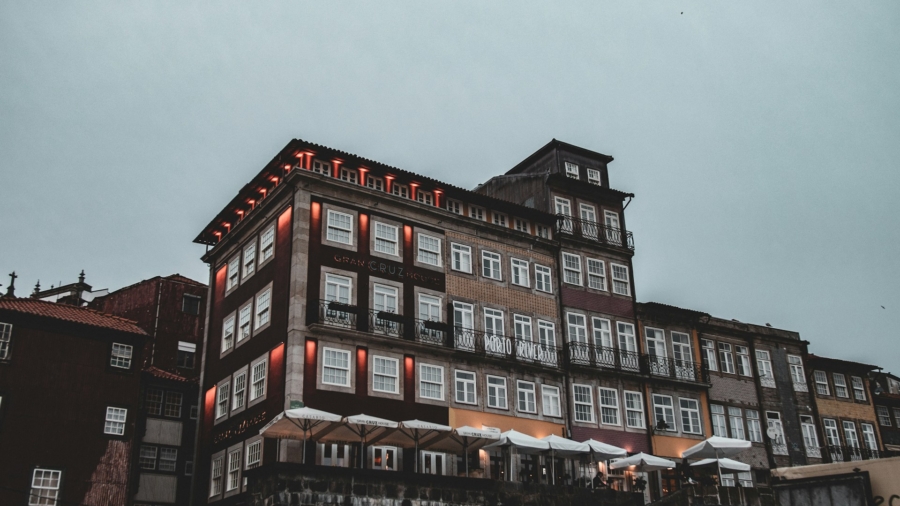When temperatures drop below freezing, commercial buildings face significant risks. Water pipes can burst, fire suppression systems fail, and heating equipment can suffer costly damage. The right freeze protection system prevents these problems while maintaining energy efficiency and operational reliability.
Choosing an effective freeze protection solution requires understanding your building’s specific needs, evaluating different technologies, and implementing systems that provide reliable performance year-round.
This comprehensive approach ensures your investment delivers maximum protection while minimizing operational costs.
Whether you manage office complexes, industrial facilities, or retail spaces, the freeze protection decisions you make today will impact your building’s performance and maintenance costs for years to come.
Understanding Your Building’s Freeze Protection Requirements
Assessing Critical Areas and Vulnerable Systems
Every commercial building has unique freeze protection needs based on its design, location, and usage patterns. Start by identifying the most vulnerable areas in your facility:
- Exterior walls and unheated spaces where pipes run through temperature-sensitive zones
- Loading docks and warehouse areas that experience frequent door openings
- Mechanical rooms with exposed plumbing and equipment
- Fire sprinkler systems that must remain operational regardless of weather conditions
- HVAC equipment, including cooling towers, chillers, and air handling units
Evaluating Environmental Factors
Your building’s geographic location and local climate patterns directly influence freeze protection requirements. Consider these environmental factors:
- Average winter temperatures and duration of freezing conditions
- Wind patterns that affect heat loss from building surfaces
- Humidity levels that impact condensation and ice formation
- Historical weather data showing extreme temperature events
Determining Load Requirements
Calculate the heat load needed for adequate freeze protection by examining:
- Pipe diameter and material affecting heat transfer requirements
- Insulation quality and its impact on heat retention
- Ambient temperature exposure in different building zones
- Desired maintenance temperature for optimal system performance
Electrical Heat Trace Systems for Large-Scale Applications
Self-Regulating Heat Trace Technology
Self-regulating electrical heat trace systems automatically adjust their heat output based on ambient temperature conditions. These systems offer several advantages for commercial freeze protection:
- Temperature-responsive operation that increases heat output as temperatures drop
- Energy efficiency through automatic power modulation
- Simplified installation with fewer temperature controls required
- Reduced maintenance due to self-limiting characteristics
Self-regulating cables work particularly well for:
- Water supply lines in varying temperature environments
- Process piping with intermittent flow patterns
- Applications requiring consistent freeze protection across different zones
Constant Wattage Heat Trace Options
Constant wattage systems provide consistent heat output regardless of temperature conditions. These systems excel in applications requiring:
- Precise temperature maintenance for critical processes
- High-temperature applications beyond typical freeze protection
- Long cable runs with minimal power variation
- Specialized control integration with building management systems
Power and Control Considerations
Electrical heat trace systems require careful planning for power distribution and control integration:
- Circuit design to handle anticipated electrical loads
- Ground fault protection for safety compliance
- Control panel integration with existing building systems
- Monitoring capabilities for system performance tracking
Steam and Hot Water Distribution Systems
Steam Trace Applications
Steam-based freeze protection systems utilize existing boiler capacity to provide reliable heat distribution. These systems work well for:
- Industrial facilities with established steam infrastructure
- Large-scale operations requiring extensive coverage areas
- High-temperature maintenance applications beyond basic freeze protection
- Facilities where electrical power limitations exist
Hot Water Circulation Methods
Hot water systems offer consistent temperature control through continuous circulation:
- Closed-loop systems that maintain consistent water temperatures
- Glycol solutions for enhanced freeze protection in extreme conditions
- Variable flow controls that adjust circulation based on demand
- Energy recovery options that capture and reuse waste heat
Infrastructure Requirements
Steam and hot water systems require substantial infrastructure investments:
- Distribution piping sized for adequate flow rates
- Insulation systems to minimize heat loss during transport
- Pump and circulation equipment for reliable operation
- Condensate return systems for steam applications
Installation Planning for Building-Scale Projects
System Design and Layout
Effective installation begins with a comprehensive system design that addresses your building’s specific requirements:
- Zone mapping to identify areas with similar protection needs
- Routing plans that minimize installation complexity and material costs
- Access considerations for future maintenance and repairs
- Integration points with existing building systems
Material Selection and Sizing
Choose components that match your building scale and performance requirements:
- Cable types and wattages appropriate for different applications
- Control equipment sized for anticipated loads and expansion
- Installation hardware suitable for your building’s construction methods
- Monitoring equipment that provides adequate system oversight
Professional Installation Requirements
Commercial freeze protection systems require skilled installation teams with:
- Electrical expertise for safe power connections and controls
- Commercial construction experience with building codes and standards
- System commissioning capabilities to verify proper operation
- Documentation skills for warranty and maintenance records
Energy Efficiency and Operating Cost Analysis
Comparing System Operating Costs
Different freeze protection technologies have varying energy consumption patterns:
Electrical Systems:
- Higher precision with zone-specific control capabilities
- Variable energy costs based on local utility rates
- Lower maintenance requirements reduce long-term costs
- Scalable installations that grow with building needs
Steam/Hot Water Systems:
- Leverage existing boiler infrastructure for potential cost savings
- Consistent energy consumption patterns
- Higher maintenance requirements for distribution systems
- Better suited for facilities with existing steam operations
Return on Investment Calculations
Evaluate freeze protection investments using a comprehensive cost analysis:
- Initial installation costs, including materials, labor, and system commissioning
- Annual operating expenses for energy consumption and routine maintenance
- Avoided damage costs from prevented freeze-related incidents
- System lifespan and replacement scheduling considerations
Energy Management Strategies
Optimize system performance through smart energy management:
- Temperature scheduling based on occupancy and weather forecasts
- Zone control that activates protection only where needed
- Integration with building automation systems for coordinated operation
- Performance monitoring to identify optimization opportunities
Maintenance and Monitoring Best Practices
Preventive Maintenance Scheduling
Regular maintenance ensures reliable freeze protection performance:
Monthly Tasks:
- Visual inspection of exposed components
- Temperature monitoring and control verification
- Power consumption analysis for unusual patterns
- Documentation of system performance data
Seasonal Preparations:
- Pre-winter system testing and calibration
- Insulation inspection and repair
- Control system updates and programming verification
- Emergency response procedure review
System Monitoring Technologies
Modern monitoring systems provide real-time insight into freeze protection performance:
- Temperature sensors are strategically placed throughout protected areas
- Power monitoring to track energy consumption and detect faults
- Alarm systems that alert maintenance staff to potential problems
- Data logging capabilities for performance analysis and optimization
Troubleshooting Common Issues
Address frequent freeze protection challenges proactively:
- Uneven heating caused by installation or insulation problems
- Control failures affecting system response to temperature changes
- Power supply issues that compromise system reliability
- Component degradation requires scheduled replacement
Long-Term Performance and System Upgrades
Performance Evaluation Metrics
Track key performance indicators to assess system effectiveness:
- Temperature maintenance accuracy across all protected zones
- Energy consumption efficiency compared to design specifications
- System availability and uptime during critical weather events
- Maintenance cost trends indicating component reliability
Technology Advancement Integration
Stay current with freeze protection technology developments:
- Smart controls that learn building patterns and optimize performance
- Wireless monitoring systems that reduce installation complexity
- Energy-efficient components that lower operating costs
- Predictive maintenance tools that prevent unexpected failures
Expansion and Modification Planning
Plan for future building changes that may affect freeze protection needs:
- Space modifications requiring additional protection coverage
- Equipment additions that change heat load requirements
- Building envelope improvements affecting insulation and heat loss
- Operational changes that alter temperature maintenance needs
Protecting Your Investment Through Smart System Selection
Selecting the right commercial freeze protection system requires balancing immediate needs with long-term performance goals. The most effective approach combines a thorough needs assessment, careful technology evaluation, and professional installation practices.
Consider your building’s unique characteristics, operating requirements, and maintenance capabilities when choosing between electrical heat trace systems, steam distribution, or hot water circulation methods.
Each technology offers distinct advantages depending on your specific application and existing infrastructure.
Successful freeze protection goes beyond preventing pipe damage—it ensures business continuity, reduces maintenance costs, and provides reliable building operations throughout the winter months. Invest time in proper system selection and installation to protect your commercial property and maintain operational efficiency year-round.

